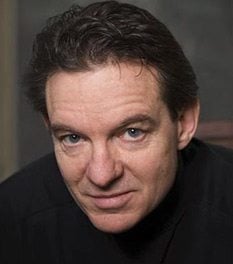
Abusing Their Religion: Lawrence Wright’s Going Clear: Scientology, Hollywood, & The Prison of Belief

A version of this story ran in the March 2013 issue.
Above: Lawrence Wright
In Going Clear: Scientology, Hollywood, & the Prison of Belief, Lawrence Wright—winner of the 2007 Pulitzer Prize for History for The Looming Tower: Al-Qaeda and the Road to 9/11—returns to his signature terrain: the outer reaches of religious faith. Wright’s gobsmackingly well-researched new volume incorporates much material from his lengthy 2011 New Yorker profile of former Scientology acolyte Paul Haggis, the writer of Oscar-winning films Million Dollar Baby and Crash (which he also directed).
That article, titled “The Apostate,” details Haggis’ 34-year tenure in the religion he once credited for much of his success, and which, for many years, he experienced as empowering and consistent with his liberal politics. Until, that is, the church’s San Diego branch came out in support of Proposition 8, the 2008 California ballot initiative banning same-sex marriage. At that point, Haggis, the father of two lesbian daughters, began to cast a critical eye at his faith. It’s Haggis’ story—that of an open-minded fellow who devoted much of his life to Scientology before exiting the church in 2009—that frames Wright’s book, and it helps readers understand why any halfway normal person would join such a peculiar institution.
As Wright is quick to point out, theology doesn’t have to make sense; there are aspects of any religion that can’t survive logical scrutiny. But even by that tolerant standard, Scientology is apt to strain credulity. First of all, there’s the faith’s founder, the late L. Ron Hubbard, a science-fiction writer who, throughout Going Clear, appears as a fairly avuncular figure—if you’ve got a really embarrassing uncle prone to dabbling in black magic while roaming the country in a travel trailer. Prior to founding Scientology (but after he’d burned through the fortune he earned from his best-selling 1950 self-help book, Dianetics: The Modern Science of Mental Health) Hubbard was wont to say things like, “I’d like to start a religion. That’s where the money is.”
Here’s a sampling of Scientology’s remarkable cosmology according to Hubbard: “Seventy-five million years ago … the Galactic Confederacy” was ruled by a “tyrannical overlord named Xenu.” Along with a handful of evil psychiatrists, Xenu endeavored to destroy his people, called thetans. “One of the mechanisms they used was to tell them to come in for an income-tax investigation,” Hubbard claimed. Later, Wright continues, “billions of thetans were transported to Teegeeack, the planet now called Earth.” Xenu was then captured in an electric cage, Teegeeack was abandoned, and the thetans who’d been dumped there got separated from their bodies. Their spirits possessed normal earthlings like you and me, and to this day there may be millions of thetan spirits “clustered inside a single … body.” Too much thetan, alas, impedes personal growth in humans.
But don’t worry, Scientology can help. Through classes and sessions that can cost hundreds of thousands of dollars over the course of a lifetime, the church claims to enable you to “go clear”—to rid your body of thetans and become your best self.
Well and fine—except for numerous accounts of human-rights abuses within the church. Former members claim to have been beaten, imprisoned, forced to undergo hard labor and abortions, and pressured to relinquish worldly goods to a church that owns, according to Wright, “about $1 billion in liquid assets” and “12 million square feet of property around the world.”
Whatever you think of Scientology, Hubbard enjoyed genuine flashes of genius, and none was greater than his early insight into the culture of celebrity worship. From the founding of his church in Los Angeles in 1954, “the cultivation of famous people—or people who aspire to be famous—was a feature of Hubbard’s grand design.” Understanding that a religion needn’t be large to gain influence and attention if its members are famous, Scientology has romanced celebrities including Tom Cruise, John Travolta and, until recently, Haggis. Such stars are insulated from the church’s abusive underbelly, and its leaders actively discourage secular research, going so far as to provide followers with software that blocks “sites containing material that vilified the church.”
Haggis, finally, couldn’t stick with the program. After “poking around,” he concluded, “If they were trying to convince me that Scientology was not a cult, they did a very poor job of it.”
Wright—Austin resident and staff writer for The New Yorker—displays touching generosity with the absurdities of faith, and carefully balances that reserve with a desire to expose Scientology’s culture of exploitation. His caution doubtless stems, in part, from the church’s record of harassing its critics—some of whom have reported being followed, physically attacked, and assaulted with lawsuits.Wright may have discovered a subject even dicier than Al-Qaeda.


